16+ SAMPLE Work for Hire Agreement
-
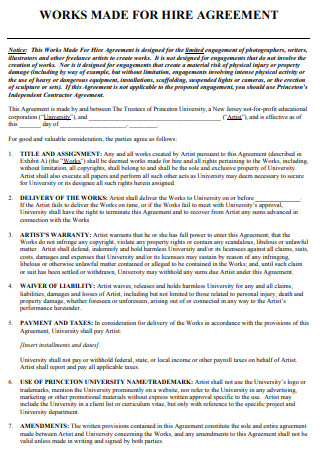
Work Made for Hire Agreement
download now -
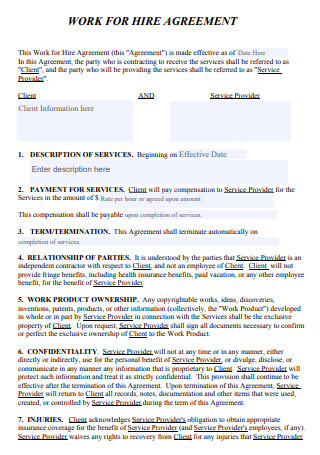
Work for Hire Agreement
download now -
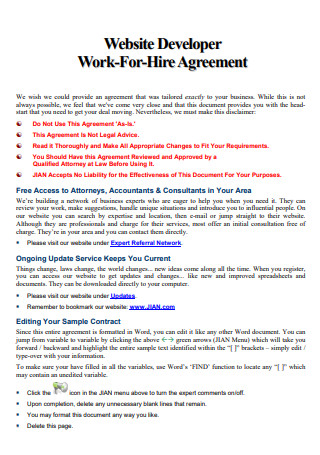
Website Developer Work for Hire Agreement
download now -
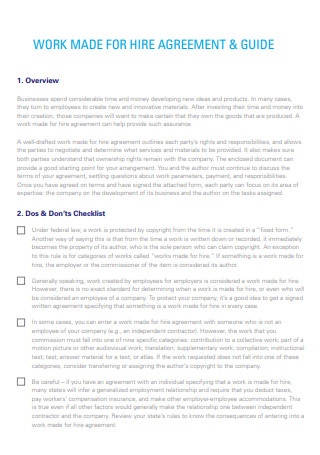
Work for Hire Agreement and Guide
download now -
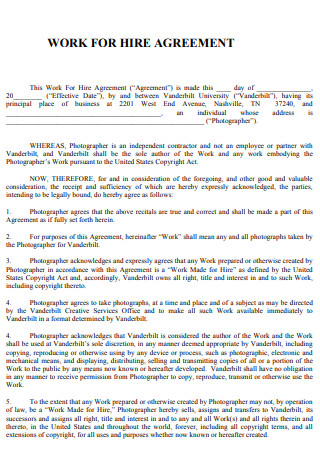
University Work for Hire Agreement
download now -
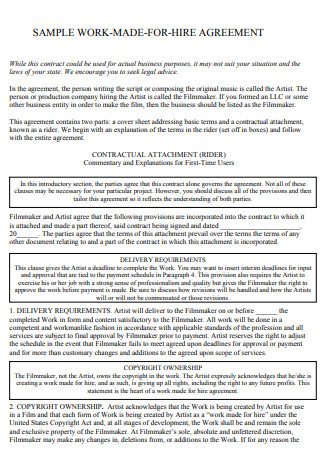
Sample Work for Hire Agreement
download now -

Photography Work for Hire Agreement
download now -
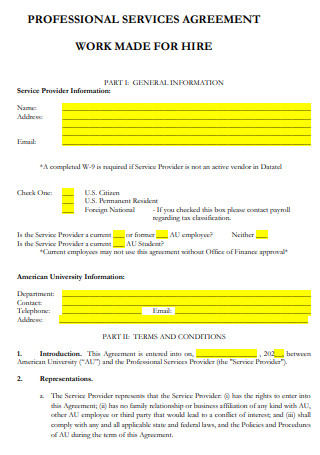
Professional Services Work for Hire Agreement
download now -
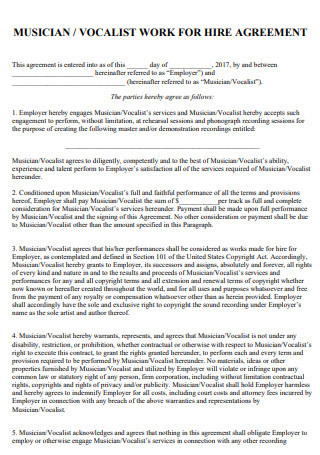
Musician Work for Hire Agreement
download now -

Independent Contractor Work for Hire Agreement
download now -
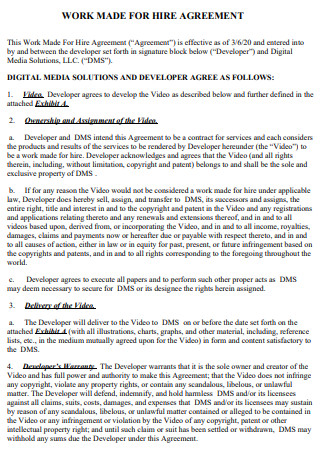
Developer Work for Hire Agreement
download now -
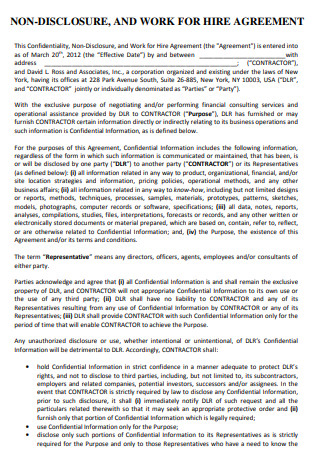
Non Disclosure Work for Hire Agreement
download now -
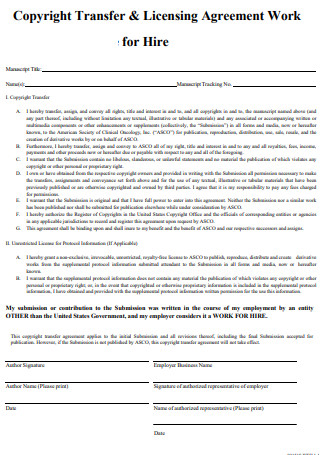
Copyright Transfer Work for Hire Agreement
download now -
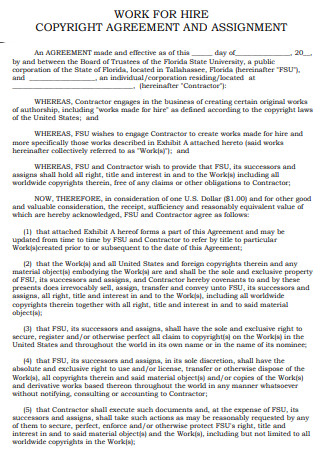
Work for Hire Agreement And Assignment
download now -

Work for Hire Agreement Concerning Photos
download now -
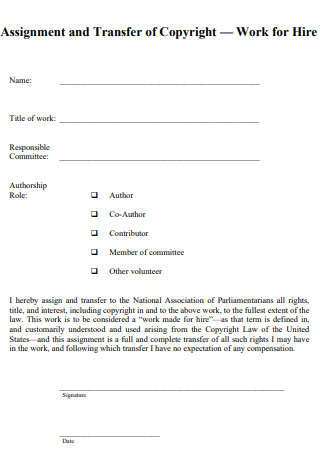
Assignment and Transfer of Copyright Work for Hire Agreement
download now -
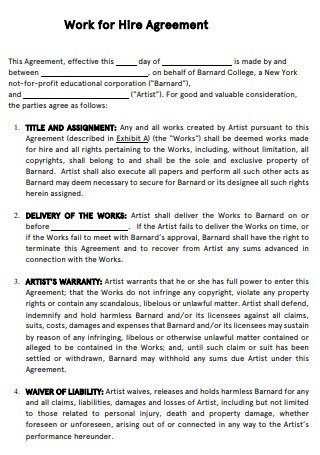
Work for Hire Agreement Example
download now
FREE Work for Hire Agreement s to Download
16+ SAMPLE Work for Hire Agreement
What Is a Work for Hire Agreement?
Examples of Work For Hire Arrangements
Tips For Work For Hire Employees
How to Create a Work for Hire Agreement
FAQs
What is an example of a work for hire?
Who owns works made for hire?
What does work made for hire mean in relation to copyright works?
What Is a Work for Hire Agreement?
A work for hire agreement is a formal written agreement between an independent contractor and a company or individual who commissions the work. Ownership or copyright of the work is usually what sets a typical work for hire agreement from a regular job contract or employee agreement.
According to an online article by Up Counsel, there are certain criteria that need to be fulfilled in order for a commissioned work to be considered such. Work for hire must fall under any of the following categories: contribution to collective work, part of motion picture, translation, supplementary work, compilation, instructional text, a test, answer material for a test, or an atlas.
Examples of Work For Hire Arrangements
There can be many types of jobs that fall under a work for hire arrangement. Whether it is a work of art or any creative project, this type of arrangement cuts across various industries and fields. The examples below are just some of the most common work for hire scenarios.
Tips For Work For Hire Employees
If you find yourself in a work for hire engagement, you need to educate yourself about the intricacies and nuances of your situation before agreeing to anything. The following are some helpful tips to consider if you are in a work for hire arrangement.
How to Create a Work for Hire Agreement
To create a work for hire agreement, you need to establish what kind of work or job is actually being expected. If you don’t want to start from scratch, you can simply browse the sample templates above and choose one that suits your needs. When you’ve selected a sample agreement, follow the basic steps below.
Step 1: Establish the Parties
A work for hire agreement is like any formal contract wherein two or more parties enter into a work arrangement. In this case, it is the worker and the client or company. The former is engaged by the latter to provide a service or produce an output. Since work for hire generally involves work that is subject to copyright, these can range from illustrations, articles, photographs to web design. This section will serve as the introductory part of your agreement. Make sure to state the complete names of both parties and assign each party a title that distinguishes them from the other (i.e., client, contractor, etc.)
Step 2: Set Expectations
The next step is to enumerate the responsibilities of each party. In a work for hire arrangement, there are obviously expectations that need to be met- work that needs to be done, output that needs to be delivered, etc. It is crucial that the agreement contract states this in a clear-cut manner. Roles and scope of work must be clearly defined in order to manage expectations on both sides. For example, if an agency commissions the pictures of a professional photographer, the latter’s duties and responsibilities should be described specifically and definitively in the contract.
Step 3: Outline the Terms and Conditions
Once you’ve outlined work expectations, draft the provisions that will dictate the transactional relationship. Setting the proper terms and conditions will not only help manage expectations but it may resolve any potential conflict in the future. The key is coming up with a comprehensive and detailed list of terms. It ought to cover everything pertaining to the work for hire arrangement. From payment guidelines, copyright issues, confidentiality clauses, non-disclosure arrangements, to cancellation of contract, all these must be present and explained clearly and directly in the contract.
Step 4: End With a Formal Declaration
As a closing statement in your work for hire agreement, include a formal declaration that reiterates the agreement that was established. This merely serves as a confirmatory statement that both client and independent contractor are amenable to the terms and conditions previously stated. Keep the statement brief and direct to the point. A single or a couple of sentences should suffice. Also, do not forget to leave enough space for the signatories to affix the date and their names.
FAQs
What is an example of a work for hire?
Some common examples of work for hire involve the work of artists, composers, musicians, authors, writers, photographers, and website developers.
Who owns works made for hire?
In a majority of work for hire cases, the one who commissions the work owns the rights to it. For instance, a company or agency engages the services of a songwriter and commissions the latter to create an ad jingle. The songwriter creates the jingle and can effectively sell the song’s rights to the agency once he signs a formal agreement.
What does work made for hire mean in relation to copyright works?
When a company or client engages services or work made for hire, it basically means that the work or output that’s subject to copyright (e.g., songs, essays, illustrations, designs, etc.) belongs to the company even if the work was created by someone else entirely. In most cases, whoever commissions the work takes ownership of its copyright.
In today’s gig economy, anyone who has the ability to produce or create excellent output can be subject to work for hire. Whether it’s a freelance visual artist or a music composer, a lot of clients actively seek out these types of work arrangements. However, work for hire agreements can be tricky and technical at times; so a sound and well-written work for hire agreement is absolutely critical. Browse the sample templates above to get started on your own agreement now!
